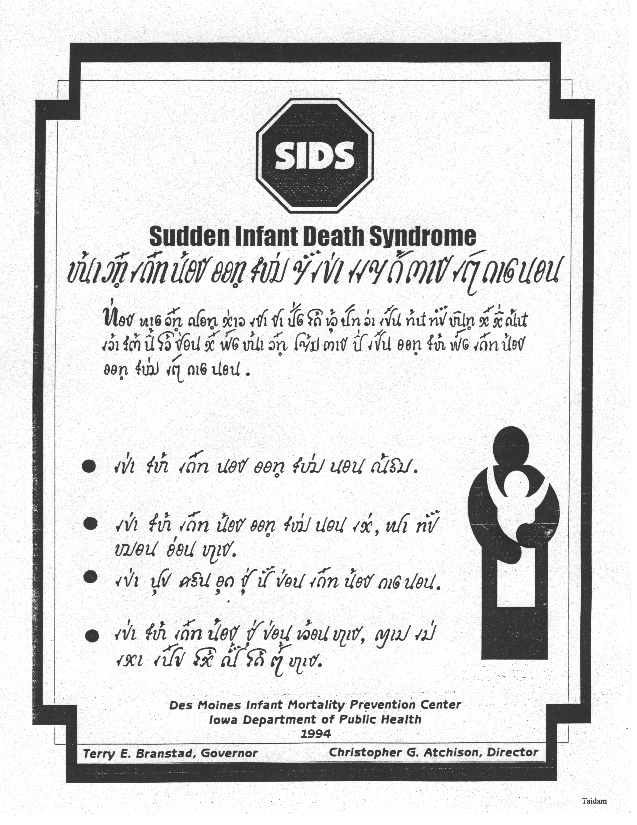(Taidam) Reducing the Risk for SIDS
Sudden Infant Death Syndrome
Translation courtesy of Iowa SIDS Alliance, Des Moines Branch


Updated Information on Sleep Position (10/96)
 |
| The American Academy of Pediatrics recommends that healthy infants
sleep on their backs or sides to reduce the risk for SIDS. Specifically:
- A supine position, where an infant is completely on his/her back, carries the lowest
risk of SIDS. Side sleeping also lowers the risk of potentially life-threatening breathing
problems, and is a "reasonable alternative" to stomach-down sleeping.
- Infants should not have soft surfaces or pillows while sleeping, which have the
potential to trap air.
- The sleeping position recommendation is for healthy infants. Some pediatricians may
recommend that babies with certain medical problems or birth defects need to sleep in the
prone, or face-down position.
- The recommendation is intended for sleeping infants. Indeed, a certain amount of time
spent in the stomach-down position is recommended for infants who are awake and being
watched.
These recommendations are considered to be primarily important during the first six
months of age, when a baby's risk of SIDS is greatest. Parents should discuss these
recommendations with their baby's doctor.
The side position has in general been considered less effective than supine because it
is less stable, and some infants rolling from the side will end up sleeping prone. The
only specific and objective data in this regard was reported at the June International
Conference by Peter Fleming (Avon, UK). He reported that the
relative risk of SIDS when sleeping on the side is double the risk of SIDS when sleeping
supine. We do not currently have any data on this question in the U.S.; nevertheless, I am
in full agreement that we should recommend only the supine position for sleeping. That is,
although side appears to be much better than prone, it is not as effective as supine
sleeping. I hope this is helpful.
Carl E. Hunt, M.D.
Toledo/Washington D.C.
| |